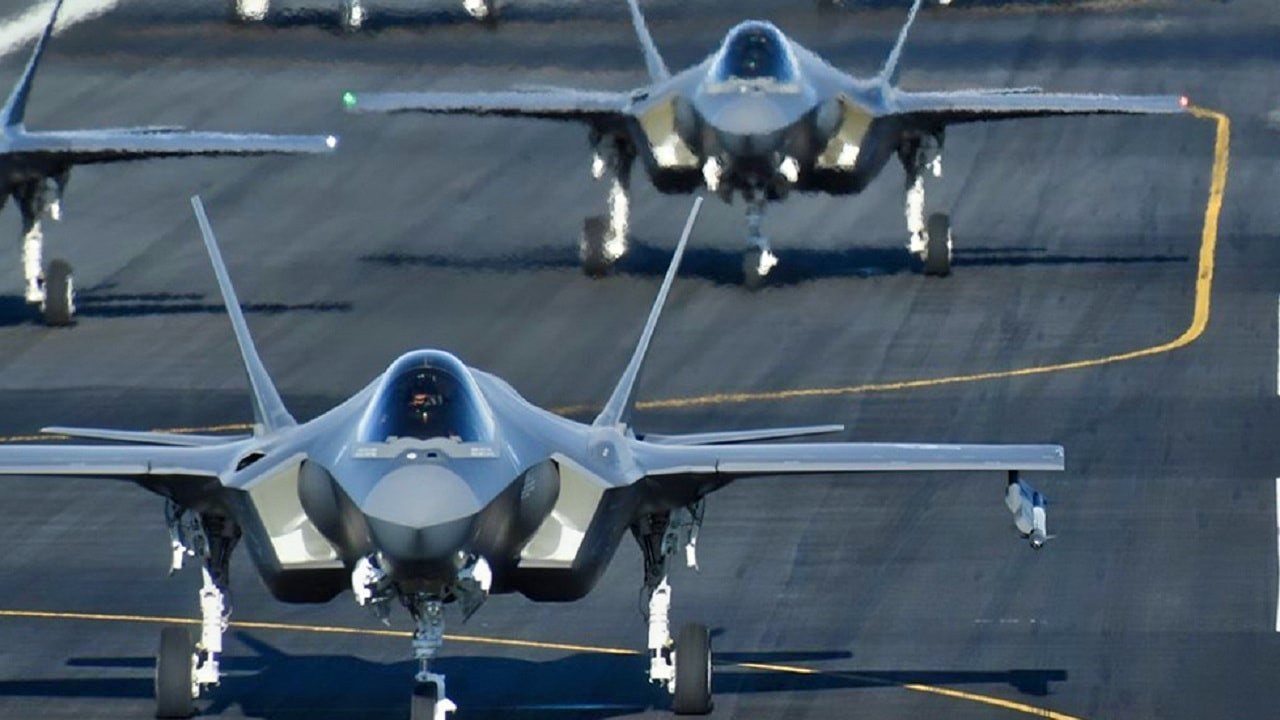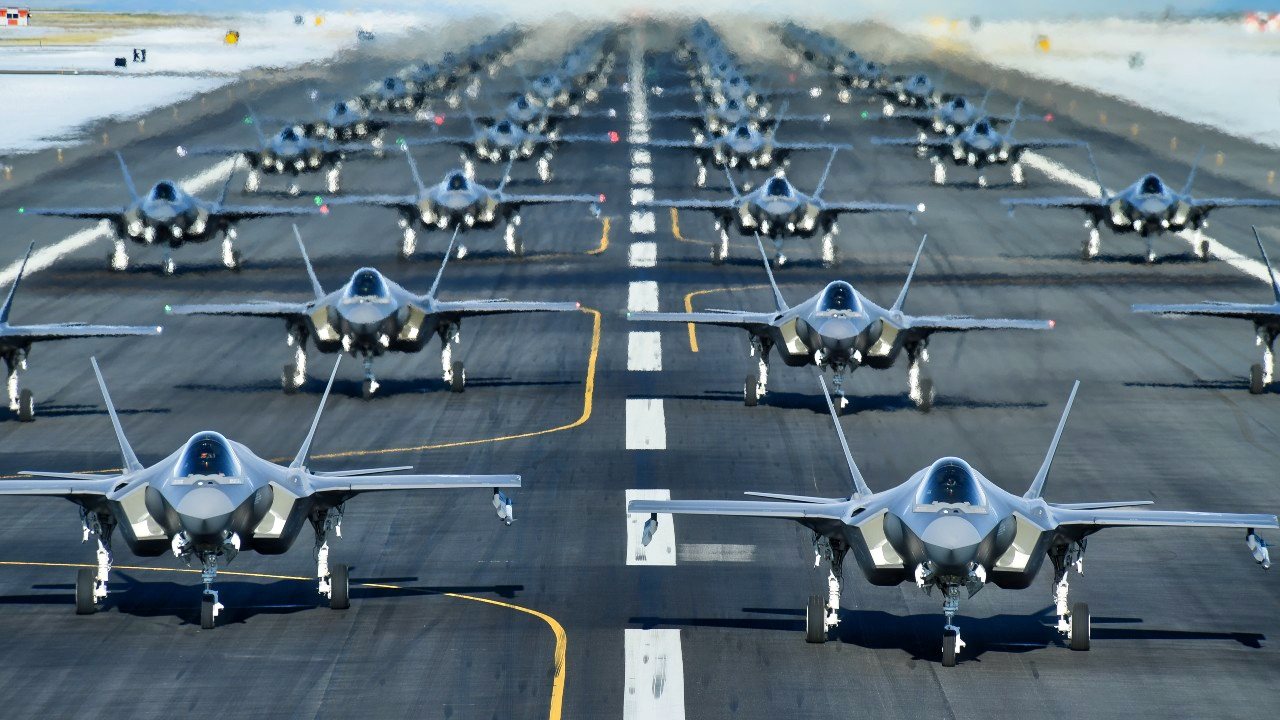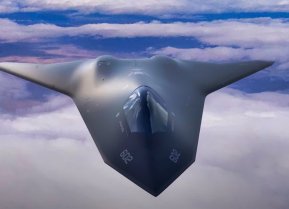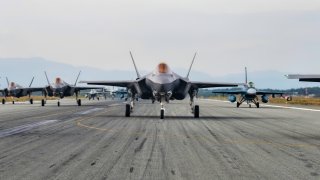China Freaked: F-35 and F-16 Fighters Just Did a Massive Elephant Walk Close By
The U.S. Air Force and Japan Air Self-Defense Force (JASDF) recently conducted a joint "elephant walk" at Misawa Air Base, showcasing aircraft like the F-16 Fighting Falcon, JASDF F-35A, and P-8 Poseidon.
What You Need to Know: The U.S. Air Force and Japan Air Self-Defense Force (JASDF) recently conducted a joint "elephant walk" at Misawa Air Base, showcasing aircraft like the F-16 Fighting Falcon, JASDF F-35A, and P-8 Poseidon.

-This powerful display, involving a close taxi formation, serves as a show of readiness and deterrence against regional threats, namely China and North Korea.
-Elephant walks trace back to WWII, with the term coined due to aircraft’s nose-to-tail lineup resembling elephants.
-These exercises highlight unit strength and collaboration, and for Misawa, reinforced the U.S.-Japan defense commitment amid rising Indo-Pacific tensions.
Joint U.S.-Japanese Elephant Walk Took Place at Misawa Air Base
On Friday, the United States Air Force and the Japanese Air Self Defense Force (JASDF) conducted a joint "elephant walk" at Misawa Air Base on Japan's home island of Honsh , the 35th Fighter Wing announced. It involved a variety of aircraft.
"Four U.S. #AirForce F-16 Fighting Falcons, four #Japan Air Self-Defense Force (JASDF) F-35A Lightning II Joint Strike Fighters, four JASDF F-2s, one JASDF E-2D Hawkeye, one U.S. #Navy C-12 Huron, and one U.S. Navy P-8 Poseidon perform an Elephant Walk," the Defense Visual Information Distribution Service (DVIDS) announced on X, the social media platform formerly known as Twitter. Photos showed the aircraft lined up in a show of force.
It was just the most recent elephant walk – the term for taxiing a number of aircraft before takeoff – to include U.S. Air Force fighters and other aircraft.
In addition to the close formation on the ground, such demonstrations can involve a minimum interval takeoff as a show of power, and to serve as a deterrent to regional rivals – in this case, China and North Korea.

Elephant Walks – Big in Japan
Two years ago, a formation of two dozen F-15C/D Eagle fighter jets assigned to the 44th and 67th Fighter Squadrons, a KC-135 Stratotanker assigned to the 909th Air Refueling Squadron, an E-3 Sentry assigned to the 961st Airborne Air Control Squadron, and an HH-60 Pavehawk assigned to the 33rd Rescue Squadron was seen lined up on the runway as a part of routine wing readiness exercise at Kadena Air Base, Japan.
Though the elephant walk at Misawa Air Base was on a smaller scale, it was notable for including U.S. and Japanese aircraft lined up together – highlighting the commitment of the U.S. Air Force to stand by its regional partners. In June 2020, the base also conducted an elephant walk formation composed of 31 aircraft, which was also meant to emphasize the efforts to enhance interoperability with the JASDF.
"This demonstration took the work of many agencies and individuals across the base, and the 35th Fighter Wing is grateful to our partners for showcasing the amazing, combat-ready force available to our Indo-Pacific leaders if called upon during a crisis," said Col. Kristopher Struve, who served as the 35th Fighter Wing commander at the time of the 2020 demonstration, the first bilateral and joint elephant walk at Misawa Air Base.

History of Elephant Walks
The first elephant walks occurred during the Second World War when large fleets of allied bombers massed for attacks – and observers on the ground noted that as the aircraft lined up, it resembled the nose-to-tail formations of elephants walking to a watering hole.
Today, the U.S. Air Force employs elephant walks to show the capability of a unit as well as the teamwork that is required to conduct such an operation. It also can help pilots prepare for the launching of fully armed aircraft in a mass event if needed.
Author Experience and Expertise: Peter Suciu
Peter Suciu is a Michigan-based writer. He has contributed to more than four dozen magazines, newspapers, and websites with over 3,200 published pieces over a twenty-year career in journalism. He regularly writes about military hardware, firearms history, cybersecurity, politics, and international affairs. Peter is also a Contributing Writer for Forbes and Clearance Jobs. You can follow him on Twitter: @PeterSuciu. You can email the author: [email protected].
Image Credit: Creative Commons and/or Shutterstock. Image are of various elephant walks in history.


